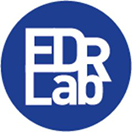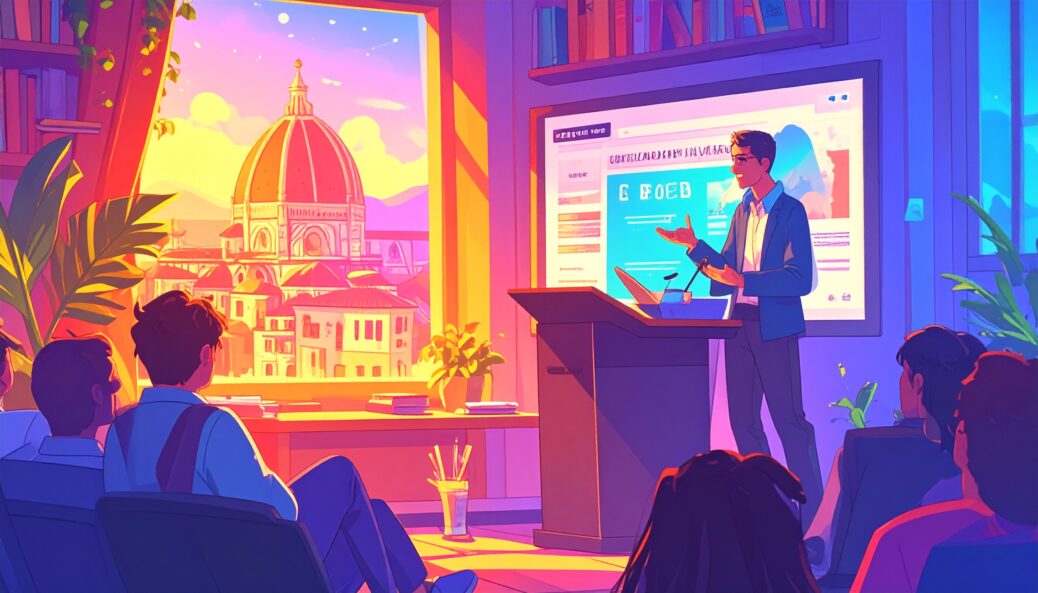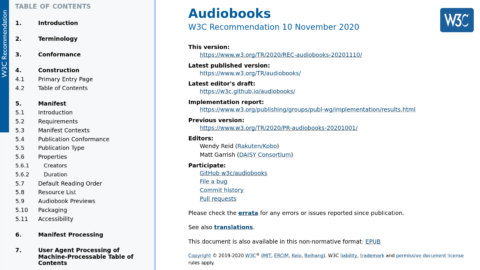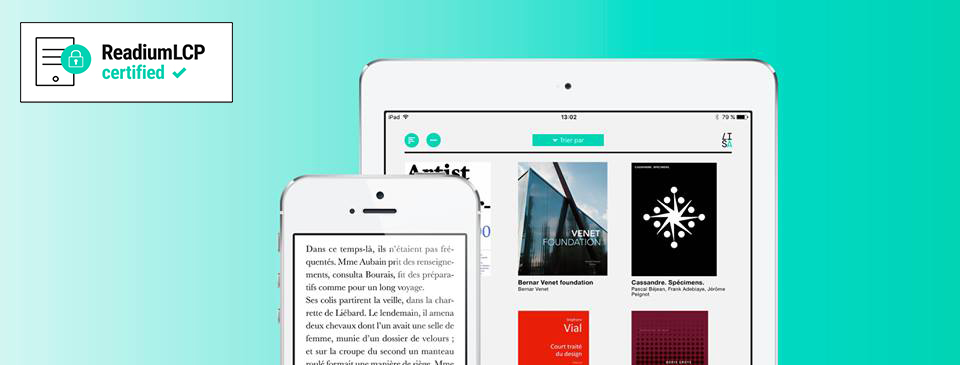The path to high-quality ebooks is increasingly being driven by accessibility, as reflected by the intense activity of the W3C’s dedicated publishing task force. Despite these significant efforts, awareness of and communication about real-life initiatives often fall short.
The Accessibility Summer School is an event designed to address this issue by showcasing the substantial work and numerous initiatives underway to establish a fully accessible industry ecosystem. This two-day event encouraged innovative thinking, collaborative problem solving and the practical application of accessibility best practices. It took place in Florence, Italy, last June, organised by Fondazione LIA within the framework of APACE, a cooperation project co-funded under the Creative Europe programme.
The event inspired hope by demonstrating that inclusive publishing thrives when diverse voices unite to break down barriers and generate new opportunities. Participants engaged in hands-on workshops, panel discussions and peer-to-peer exchanges, all centred on integrating accessibility into publishing workflows. The programme emphasised the importance of moving beyond simple compliance checklists to cultivate a culture of accessibility that prioritises inclusive practices at every stage.
EDRLab was invited to provide a live demonstration of the ecosystem from a reader’s perspective, summarised below.
Finding the road
The journey of a reader in the digital age can be complex, especially when accessibility is a key consideration. Let’s explore how it can be simplified through the standards and technologies that make each step of this journey possible, focusing on a seamless and inclusive experience for all.
The adventure begins with the quest for an e-book that is readable by people who are blind or have low vision. This essential search can be performed across a diverse range of platforms, each offering pathways to discovering suitable content. It can be with a traditional online bookshop, where the user can browse and filter publications using all the possible features of the webpage, especially when the reader needs to discover new ways of accessing content for each vendor or lender. It could also be integrated into an in-app catalogue or within a dedicated reading application, which may offer curated selections and enhanced accessibility features, allowing readers to discover a variety of catalogues from the same well-known interface.
Crucial to the success of this initial phase is the prominent and unambiguous display of accessibility metadata. This metadata, which describes the accessibility features of an e-book (such as screen reader compatibility, adjustable font sizes, or alternative text for images), is vital for guiding readers to content that aligns with their specific needs and assistive technologies. Without clear and comprehensive accessibility information, users would be unable to identify suitable e-books, leading to frustration and exclusion. The W3C Accessibility Metadata Display Guide for Digital Publications 2.0 provides essential guidelines for presenting this information effectively.
Furthermore, the Open Publication Distribution System (OPDS) protocol plays a pivotal role in facilitating the seamless discovery of available publications across varied catalogues. OPDS acts as a standardised feed format, enabling publishers, libraries, and bookshops to expose their catalogues in a machine-readable way. This interoperability allows accessible reading applications and discovery tools to efficiently search, aggregate, and present accessible eBook options to users, significantly simplifying the process of finding and accessing relevant content. The practical implementation of both explicit accessibility metadata and the OPDS protocol ensures that the adventure of finding an e-book readable without sight is not only possible but also efficient and empowering.
Once a user has successfully located their desired book, the subsequent acquisition or lending process should be entirely seamless and free from any concerns regarding their preferred reading system or the apprehension of personal data breaches. This is where the Readium LCP (Licensed Content Protection) solution plays a truly pivotal and transformative role. By implementing robust encryption and rights management, Readium LCP ensures an unparalleled level of data privacy, safeguarding sensitive user information throughout the entire transaction lifecycle. Furthermore, and crucially, it actively preserves all essential accessibility features of the digital content. This means that users who rely on assistive technologies or specific display settings can continue to access and experience the book without any compromise, ensuring an inclusive and equitable reading experience for all.
Enjoying each kilometre
With the e-book in hand, the reading experience itself should be rich and adaptable. Modern reading systems, such as Thorium Reader, currently available on desktop and soon to be expanded to web and mobile platforms, exemplify this. It offers native accessibility features such as comprehensive text aspect modification, allowing users to adjust font size, type, line spacing, and colour contrast to suit their visual needs. Read-aloud functionality is also a core feature, providing high-quality synthetic speech with options for speed control and voice selection. Navigation within the read-aloud experience includes skipability, enabling users to jump forward or backwards by paragraphs, chapters, or specific sections, and escapability, allowing them to omit the reading of complementary content marked as such by the content creator. Assistive technologies with specific, targeted features have been included since conception, allowing for the best of those tools.
Over 100 applications built on the Readium toolkits offer diverse reading environments that are accessible and demonstrate high efficiency in layout personalisation, read aloud, and with screen readers, ensuring a smooth and intuitive experience for all readers. These platforms empower users to engage with their e-books using their eyes, ears, and fingers, ensuring optimal reading conditions tailored to individual needs.
Beyond the foundational act of reading, the digital book ushers in an era of significantly enhanced interactivity, transforming the solitary experience into a dynamic and collaborative one. Readers are no longer passive recipients of information; they become active participants in the learning and comprehension process. Key features, such as the ability to bookmark essential passages, allow for effortless navigation and quick returns to critical sections of a text, serving as a personalised index of insights. Furthermore, the capacity to annotate text, adding personal notes, highlights, and comments directly within the digital margins, facilitates deeper engagement and retention.
The true revolutionary potential, however, lies in the upcoming ability to seamlessly share these invaluable notes and annotations across diverse applications and platforms, thanks to ongoing work at W3C. This interoperability will dismantle the silos that currently hinder collaborative learning and academic work. Imagine students working on a group project, able to instantly share their individually curated notes on a shared digital text, fostering collective understanding and efficient knowledge building. For researchers and academics, the impact will be profound, significantly streamlining citation work. Instead of meticulously re-typing or cross-referencing information, shared annotations could automatically link to sources, dramatically reducing the time and effort spent on bibliographic tasks. This interconnected ecosystem of shared knowledge will not only enhance individual learning but also cultivate a more collaborative and efficient scholarly environment, pushing the boundaries of what is possible with digital texts.
The implementation of such a system holds significant promise for the publishing industry, offering a streamlined workflow that directly addresses current inefficiencies. Publishers will gain the unprecedented ability to perform corrections and comprehensive copy-editing tasks directly within the EPUB format, eliminating the need for cumbersome conversions and external tools. This direct manipulation not only speeds up the revision process but also ensures greater accuracy and consistency, as changes are applied in the native distribution format.
Furthermore, this advancement will unlock new avenues for content distribution and engagement. It will facilitate the creation and dissemination of annotated ebook versions, allowing authors to share their insights, research notes, or personal commentaries directly with readers. Beyond authors, third parties such as educators, literary critics, or even passionate readers could create and share their own annotated editions, fostering a richer, more interactive reading experience and potentially giving rise to new forms of collaborative content creation and knowledge sharing within the digital publishing ecosystem. This evolution could redefine the relationship between publishers, authors, and readers, fostering a more dynamic and interconnected literary landscape.
How roads are paved
There is an acknowledgement to be made of the extensive work that often goes unseen by the reader. This includes the development of tools for extracting and inferring information from various file types, ongoing efforts to refine comic book formats, and the means to reflow fixed-layout content for greater adaptability. Furthermore, countless hours are dedicated to discussing standards and technology with exceptionally talented individuals from around the world. EDRLab, committed to an open-source and open standards model, ensures that these innovations are accessible to all. However, maintaining and developing these resources comes at a cost, underscoring the vital need for support and involvement from the broader community.













 contact@edrlab.org
contact@edrlab.org +33 1 83 64 41 34
+33 1 83 64 41 34
